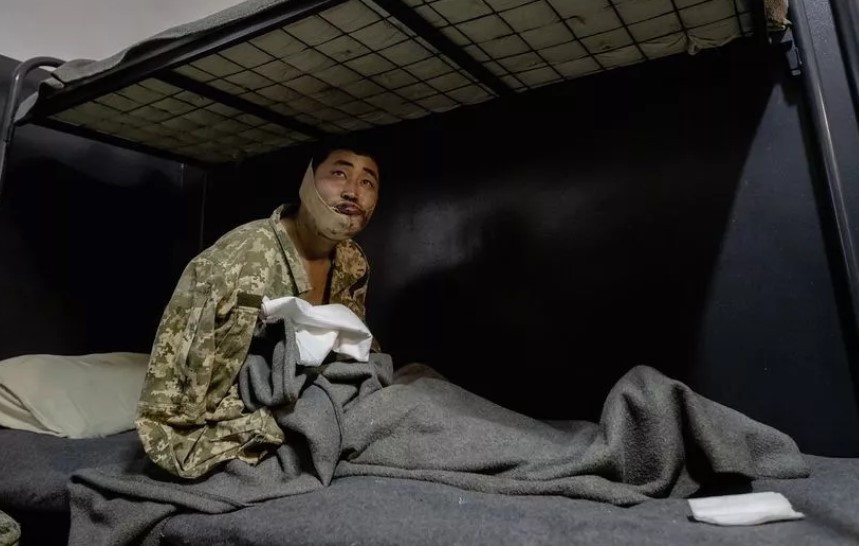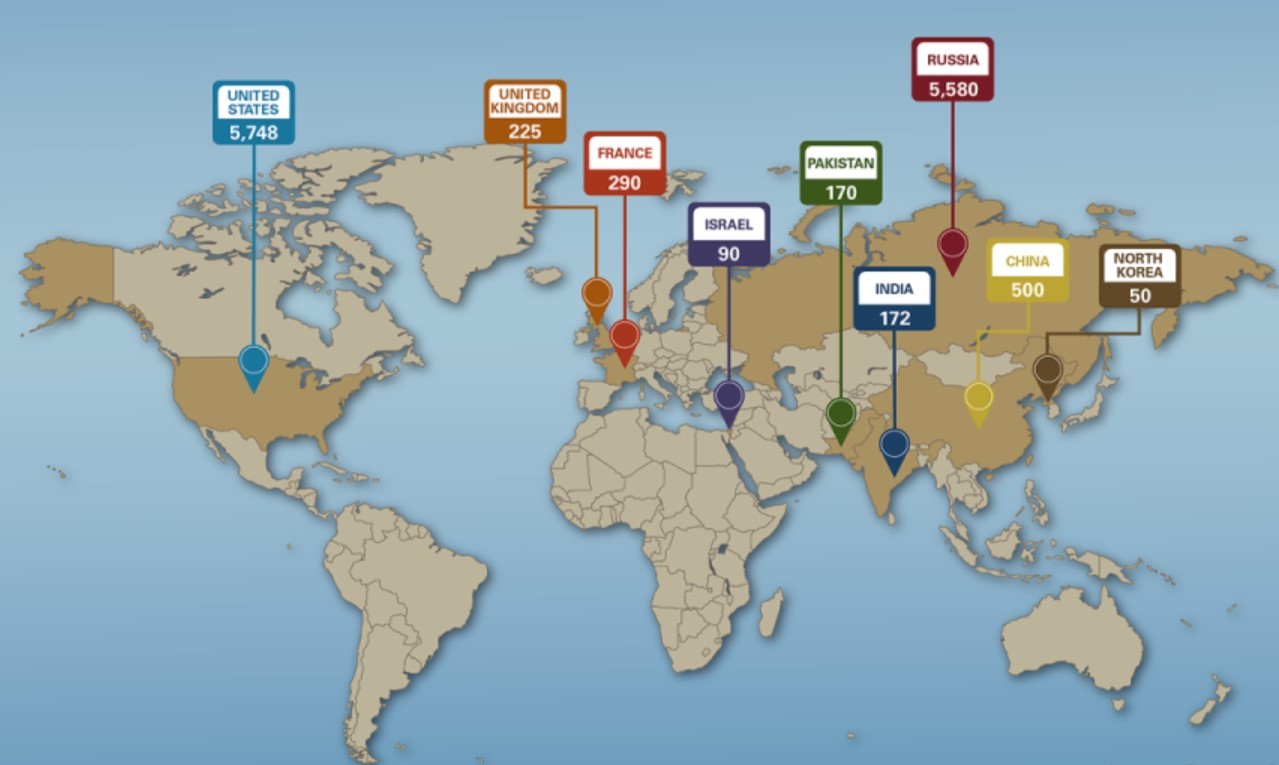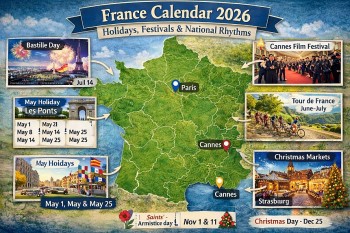How Strong Is North Korean Army/Nukes – The World's 30th Powerful Militaries
 |
| North Korea – Top 30th Strongest Militaries In The World |
North Korea (officially the Democratic People's Republic of Korea) has been flexing its military muscle since Supreme Leader Kim Jong-un took office in 2011.
North Korea's military and the armed branch of the Workers' Party of Korea are both known as the Korean People's Army (WPK). A cornerstone of the Songun policy, it serves as the beating heart of North Korean society. Kim Jong-un is the head of the military and the country's Supreme Commander. Ground Force, Navy Force, Air and Anti-Air Force, Strategic Rocket Forces, and Special Operation Force are the five arms of the Korean People's Army (KPA).
Take a look at the country’s history, strength and powers, and how it is the 30th strongest militaries in the world.
How Powerful are Pyongyang's Nuclear Weapons
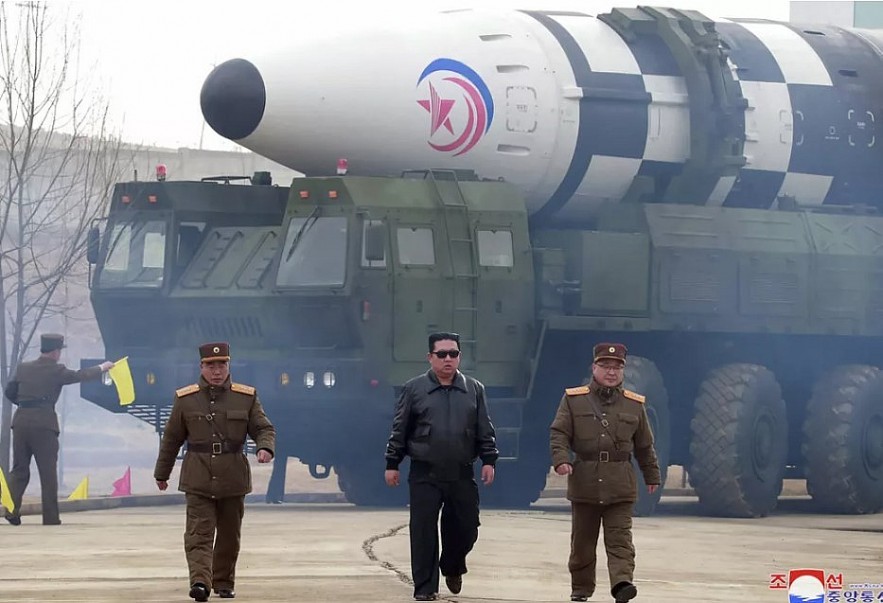 |
| North Korea Nuclear Weapons |
Kim Jong-un has accelerated North Korea's nuclear program since 2011. Kim has conducted four nuclear tests in the past 13 years: one in 2013, two in 2016, and one in 2017.
He also oversaw 160 missile tests, more than his father, Kim Yong-il, and grandfather, Kim Il-sung, the founder of North Korea. The US mainland is supposedly within missile range.
North Korea's nuclear tests have increased detonation power. The September 2017 nuclear test was larger than expected, supporting Pyongyang's claims that it has the materials to build a hydrogen bomb.
However, North Korea has not conducted similar tests since then. It claimed to have deactivated its main nuclear material production facility, Yongbyon, in 2018.
This followed Kim's Singapore summit with former US President Donald Trump.
However, in 2021, the IAEA reported that North Korea had resumed fissile material production at Yongbyon, casting doubt on these claims.
Satellite imagery showed North Korea was building for another nuclear test by mid-2022, alarming the IAEA.
In September, North Korea released rare photos of its nuclear program. They revealed unprecedented information about the nation's centrifuges used to make bomb-grade uranium.
The photos, seen as Kim's power grab, sparked Western and global anxiety.
How Strong is North Korean Military: Strength and Powers
 |
| North Korean Military |
For 2022, North Korea is ranked 30 of 140 out of the countries considered for the annual GFP review. It holds a PwrIndx score of 0.4621 (a score of 0.0000 is considered 'perfect').
About $6 billion US dollars is allocated annually to fund KPA operations. There may be enough fissile material in North Korea for two to nine nuclear weapons, according to a 2009 analysis by the U.S. Institute for Science and International Security. The Korean People's Army (KPA) is given top priority in North Korea's government and society under the Songun ("Military First") doctrine.
The North Korean state news agency reported that in 2010, the country spent 15.8 percent of its GDP on the military. While the exact percentage is unknown, most estimates of North Korea's defense industry place defense spending at somewhere between a quarter and a third of total government spending. International Institute for Strategic Studies estimates that in 2003, North Korea spent almost 25% of its GDP on defense. Between 32% and 38% of central government spending went toward defense in Poland during the mid-1970s and the early 1980s, according to estimates supplied by the Polish Arms Control and Disarmament Agency.
There are several countries that purchase missiles and other military hardware from North Korea.
[30] The United Nations designated KOMID in April 2009 as North Korea's top arms dealer and main supplier of equipment related to ballistic missiles and conventional weapons. Likewise, Korea Ryonbong was singled out as someone who backs North Korea's arms deals.
North Korea has historically supported dozens of revolutionary, insurgent, and terrorist organisations in over sixty-two different nations. North Korea has educated over 5,000 foreign personnel and sent over 7,000 military advisers, principally from the Reconnaissance General Bureau, to roughly 47 different nations.
The Islamic Revolutionary Guard Corps, the Palestine Liberation Organization, the Polisario Front, and the Thai Communist Party are just some of the groups that have benefited from North Korean aid. KPA instructors were responsible for the first training of the Zimbabwean Fifth Brigade. They say that North Korean soldiers participated in the fighting in both the Libyan-Egyptian War and the Angolan Civil War. As many as 200 pilots from the KPAF fought in Vietnam, with many of them claiming victories over US planes. Likewise, two KPA anti-air artillery units were deployed to North Vietnam.
What are North Korea’s Conventional Military Capabilities?
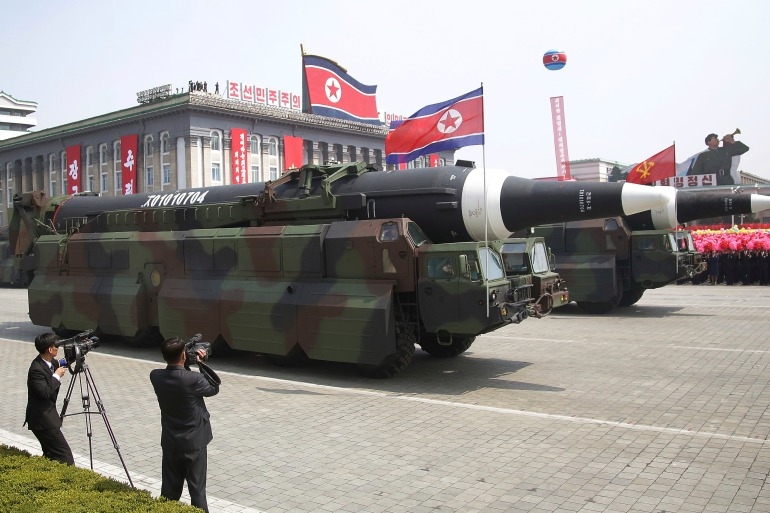 |
| Photo: Al Jazeera |
The military is the fourth largest in the world, with about 5% of North Koreans serving. About 600,000 people are thought to be in the military's reserve force. Article 86 of the North Korean constitution [PDF] says that every citizen of the country must serve in the military.
The dictatorship spent $3.6 billion a year on the military from 2007 to 2017, according to the U.S. State Department. When compared dollar-for-dollar, North Korea's enemies and neighbors spend more on their armies, and military experts say North Korea is stuck with old technology and gear. However, Pyongyang's conventional weapons are still a threat to its southern neighbor because the regime has deployed its military forward and is firing missiles at Seoul.
North Korea has put up weapons near and along its border with South Korea and fired regular missiles at both its neighbor and Japan to keep them from invading. A 2021 report from the International Institute for Strategic Studies, a think tank based in the UK, says that North Korea's military has about 550 combat-capable aircraft, 290 helicopters, 400 combatant vessels, 280 amphibious vessels, 70 submarines, 4,000 tanks, 2,500 armored vehicles, and 5,500 multiple rocket launchers.
The History of North Korean Military
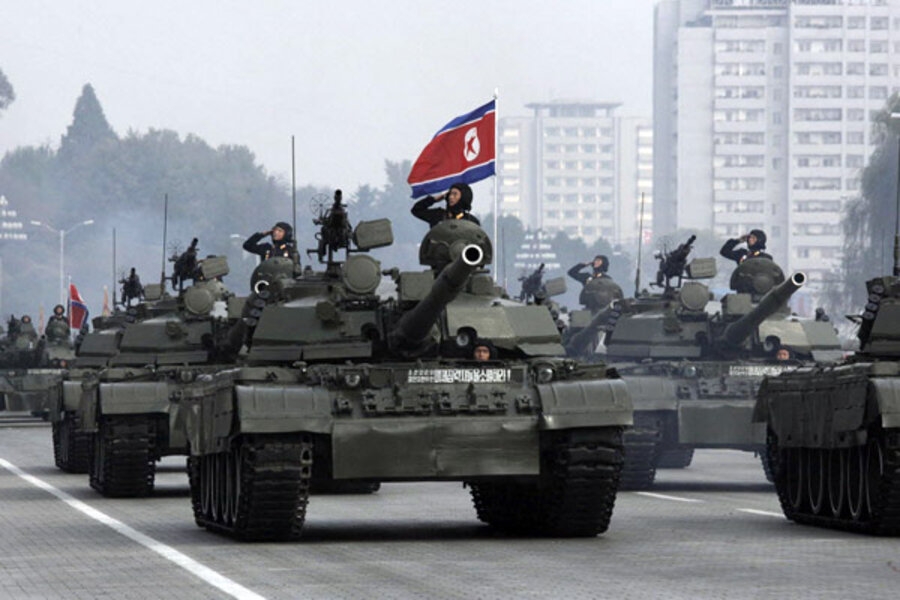 |
| Photo: Christian Science Monitor |
Korean People's Revolutionary Army 1932–1948
Kim Il-sung's anti-Japanese guerrilla army, the Korean People's Revolutionary Army [ko], was established on 25 April 1932. This revolutionary army was transformed into the regular army on 8 February 1948. Both these are celebrated as army days, with decennial anniversaries treated as major celebrations, except from 1978 to 2014 when only the 1932 anniversary was celebrated.
Korean Volunteer Army 1939–1948
Formed in the Chinese city of Yan'an in 1939, the Korean Volunteer Army (KVA) was an armed group fighting for independence for Korea. Kim Tu-bong and Mu Chong were the two leaders of the army. At during this time, a school was set up near Yan'an to educate future military and political leaders for an independent Korea.
There were about a thousand men in the KVA by 1945, most of them Korean deserters from the Imperial Japanese Army. The KVA fought with Chinese communist forces at the time, from which it obtained weapons. At the fall of Japan, the KVA followed the Chinese communist forces into eastern Jilin in an effort to recruit ethnic Koreans living in China, particularly in the city of Yanbian, before invading Korea.
Soviet Korean Units
On October 12, 1945, the Soviet 25th Army headquarters in Pyongyang issued a statement ordering all armed resistance groups in the northern half of the peninsula to disband during the Soviet occupation of the area north of the 38th Parallel following World War II. With approval from Soviet military headquarters, 2,000 Koreans with prior experience in the Soviet army were dispersed to different sites around the country on 21 October 1945 to organize constabulary forces.
Formation of National Army
On 11 January 1946, the headquarters announced the formation of a special force to provide protection at railways. On August 15th of that year, the organization was formed to oversee the nation's security services and the development of a national military.
Soon after, the Central Constabulary Academy (renamed KPA Military Academy in December 1948) and the Pyongyang Academy (renamed No. 2 KPA Officers School in January 1949) opened to train political and military officers for the new armed forces.
The Constabulary Discipline Corps was restructured into the Korean People's Army General Headquarters once the military was arranged and training facilities were built. Upon the establishment of the headquarters, the formerly unofficial units were issued Soviet uniforms, insignia, and weapons, transforming them into military regulars.
On February 4, 1948, the Interim People's Committee established the State Security Department, the precursor to today's Ministry of People's Defense. A full seven months before the government of the Democratic People's Republic of Korea was proclaimed on 9 September 1948, on 8 February the Korean People's Army was formally created, the day after the Fourth Plenary Session of the People's Assembly approved the plan to separate the roles of the military and the police. A central guard battalion, two divisions, and an independent mixed and combined arms brigade were also constituted under the Minister of State for the People's Armed Forces.
Conflicts and events
Before the Korean War started, Stalin gave the KPA advanced tanks, heavy artillery, different kinds of mortars, and pistols. At the time, the South Korean Army didn't even come close, either in terms of numbers of troops or equipment. During the early stages of the Korean War in 1950, the Korean People's Army (KPA) quickly pushed South Korean forces south and took Seoul.
But after the US amphibious reached the Battle of Incheon and pushed to the Yalu River in the fall, 70,000 of the KPA's 100,000-strong army were killed. China openedly sent troops to the area on November 4. On December 7, China fired Kim Il-sung from his job as head of the KPA. [16] In the later stages of the war, the KPA was given a supporting role to play by the Chinese. It was over in 1953, with 290,000 people killed and another 90,000 missing in action.
From 1953 on, the Military Armistice Commission (MAC) was in charge of overseeing and enforcing the terms of the ceasefire. The Neutral Nations Supervision Commission (NNSC), which was made up of representatives from the Czech Republic, Poland, Sweden, and Switzerland, looked over the armistice clauses that said new or more troops or weapons couldn't be brought into Korea.
Since December 1962, the Soviet Union has looked at war from the point of view of the people, not the military. As the Soviets gave up on direct warfare, the Maoists switched to a strategy of slowly killing off their enemies. With the help of machines, some infantry formations were given more focus on light weapons, high-angle indirect fire, fighting at night, and blocking the sea.
Service branches of North Korean Military
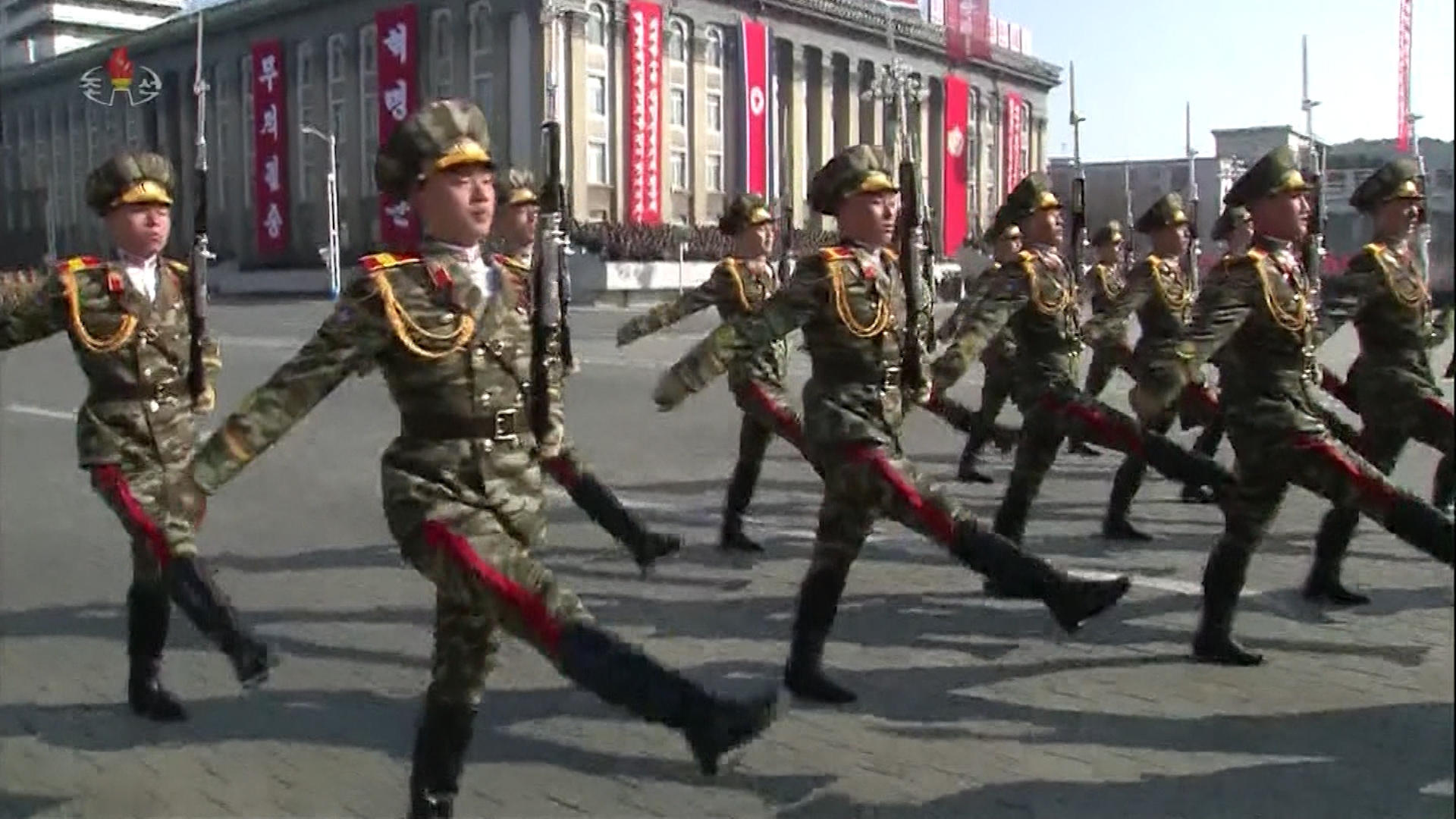 |
| Photo: CNN |
Ground Force
The Korean People's Army Ground Force (KPAGF; Korean: 조선인민군 륙군; Hanja: 朝鮮人民軍 陸軍) is the main branch of the Korean People's Army, responsible for land-based military operations.
The Korean People's Army Ground Force was formed on August 20, 1947. It outnumbered and outgunned the South Korean army on the outbreak of the Korean War in June 1950 before being pushed back by a combined United Nations-Republic of Korea counteroffensive. North Korean ground forces formations which fought in the Korean War included the I Corps, the II and III Corps. The IV Corps and V Corps, VI and VII Corps were formed after the outbreak of war. Divisions included the 105th Armored Division, the 1st, 2nd, 3rd, 4th, 5th, 6th, 7th, 8th, 9th, 10th, 12th, 19th, and 43rd Infantry Divisions. During the Korean War, it also contained a number of independent units such as the 766th Infantry Regiment.
Naval Force
Both the West Fleet and the East Fleet of the Korean People's Army Naval Force (KPANF) are in poor condition and have restricted ranges, making it impossible for them to help one other or even meet for joint operations. T'oejo-dong is the headquarters for the East Fleet, whereas Nampho is the headquarters for the West Fleet. In addition to a naval aviation wing, the Naval Command Headquarters in Pyongyang is also in charge of other training, shipbuilding, and maintenance units.
Air and Anti-Air Force
Air defense in North Korea is the responsibility of the Korean People's Army Air and Anti-Air Force (KPAAF), which employs anti-aircraft artillery and surface-to-air missiles (SAM). While much of the hardware is antiquated, there is a plethora of stacked, overlapping, mutually supporting air defense stations that pose a significant challenge to enemy air attacks.
Strategic Rocket Force
The Korean People's Army Strategic Rocket Force (KPASRF) is a major division of the KPA that controls North Korea's nuclear and conventional strategic missiles. It is mainly equipped with surface-to-surface missiles of Soviet and Chinese design, as well as locally developed long-range missiles.
Special Operation Force
The Korean People's Army Special Operation Force (KPASOF) is an asymmetric force with a total troop size of 200,000. Since the Korean War, it has continued to play a role of concentrating infiltration of troops into the territory of South Korea and conducting sabotage.
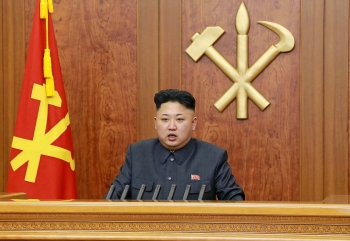 Who is Kim Jong Un: Biography, Education, Family and Path to Power Who is Kim Jong Un: Biography, Education, Family and Path to Power |
North Korean Weapons
The Korean People's Army has a wide range of weapons and equipment, including those that were originally made in China or the Soviet Union as well as improved versions made in Korea. The indigenous Kalashnikov-type rifles are the de facto standard issue weapon for the military. The Type 88 is issued to the front lines, while the Type 58 assault rifle and the Type 68A/B are now issued to the rear echelon or home guard battalions. At the Day of the Sun military parade in 2017, an unidentified rifle was observed that looked like a hybrid of a grenade launcher and an assault rifle, like the U.S. OICW or the South Korean S&T Daewoo K11. Rifles in North Korea are typically labeled "Type XX," after the Chinese naming convention. North Korea successfully tested a "newly designed ultramodern tactical weapon" on November 15th, 2018. North Korean leader Kim Jong-un witnessed the test at the country's Academy of Military Science and hailed the results as a "decisive turn" in improving the military's ability to fight.
Several pieces of military hardware are on show in the Korean People's Army Military Hardware Museum in Pyongyang.
Chemical weapons
The U.S. Department of Defense believes North Korea probably has a chemical weapons program and is likely to possess a stockpile of such weapons.
Nuclear capabilities
Several types of missiles, including those with shorter, longer, and even intercontinental ranges as well as those launched from submarines, have been tested by North Korea. U.S. intelligence estimates that Pyongyang possesses between 30 and 60 nuclear bombs, while other experts put that number at 15 to 20. In July of 2017, the regime tested two intercontinental ballistic missiles (ICBMs) that could deliver a heavy nuclear payload. The Military has verified that North Korea has conducted ICBM tests, and experts have speculated that the new missile, if launched on a flatter trajectory, might reach the continental United States.
What missiles has North Korea tested?
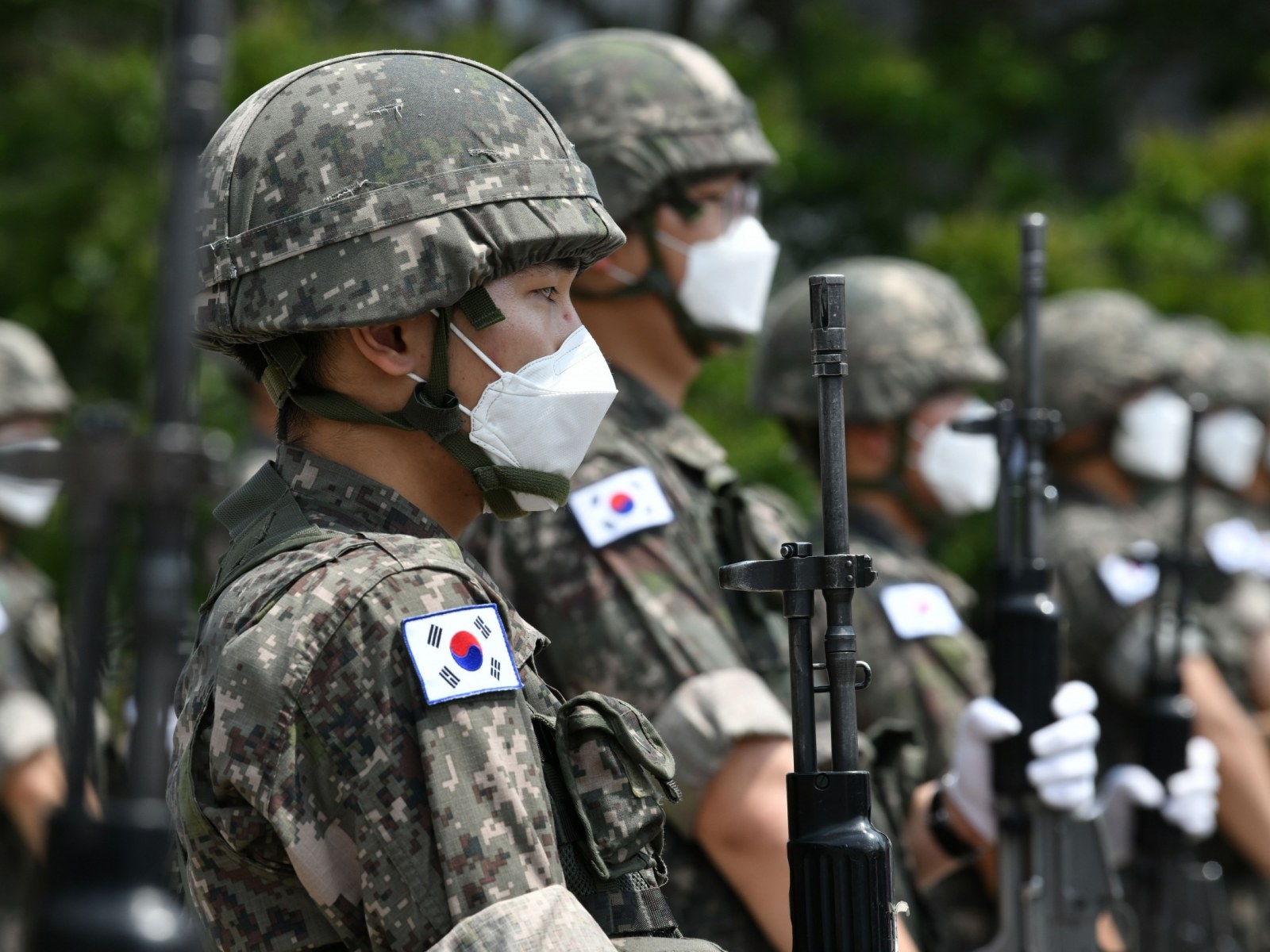 |
| Photo: Newsweek |
Including short, medium, intermediate, and intercontinental range missiles, as well as submarine-launched missiles, North Korea has tested over a hundred ballistic missiles capable of carrying nuclear warheads.
Intercontinental ballistic missiles (ICBMs) capable of carrying a massive nuclear warhead were successfully tested by the regime in July and November of 2017. Pyongyang claimed that the Hwasong-15 ICBM it tested in November reached an altitude of 4,475 kilometers (2,780 miles), well beyond the International Space Station, before descending to splash down in the ocean off the coast of Japan after traveling approximately 1,000 kilometers (590 miles). With a flatter trajectory, the Hwasong-15 could potentially reach anywhere on the U.S. mainland, where its range is estimated to be 13,000 kilometers (8,100 miles). It is still uncertain if North Korea's ICBMs have the capability to survive reentry, and the nuclear payload that they could carry is a point of contention among US analysts and experts from other countries. U.S. intelligence estimates that North Korea has perfected the ability to miniaturize a nuclear warhead such that it may be placed on a ballistic missile. This evaluation was made in 2017, and its results remain classified.
As relations with the US and South Korea began to improve around the end of 2017, Kim decided to suspend missile tests. In spite of the breakdown of talks between Kim and U.S. President Donald Trump in Hanoi, Vietnam, in February 2019, North Korea resumed nuclear testing in the middle of 2019. Later that year, Pyongyang performed its first ballistic missile test in three years by launching it from beneath the waves.
North Korea has since shown off its new arsenal of ballistic missiles. The first is an ICBM larger than the Hwasong-15, which will be displayed at a military parade in October 2020. Analysts speculate that it may transport several nuclear warheads or decoys to fool missile defense systems, but it has neither been given a name nor been put through any tests. In addition, in October 2020, the new Pukkuksong-4 submarine-launched ballistic missile was on display, and in January 2021, its successor, the Pukkuksong-5, was introduced. The Pukkuksong-5, according to experts, can travel around 3,000 kilometers (1,864 miles), making it capable of reaching Guam. Both missiles, experts suggest, have not been tested as of yet.
Pyongyang tested solid-fueled, short-range ballistic missiles in 2021, furthering a technology that makes missiles more portable and can be launched in a shorter amount of time. In addition, it conducted tests of a new type of long-range cruise missile that is more agile and can evade missile defenses when launched in conjunction with ballistic missiles. For the first time ever in September, North Korea test-fired missiles from a train launcher, making them harder for the United States and its allies to detect.
The reliability of North Korea's ballistic missiles is still a major question mark. Early guidance technologies received from the Soviet Union have been criticized for making these missiles imprecise, according to observers. Some defectors and experts, however, have claimed that North Korea has begun using GPS guidance, similar to China's navigation system, calling into question the legitimacy of the system and the veracity of North Korea's claims that its missile arsenal is more accurate and reliable than previously thought.
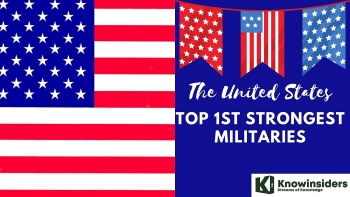 How Strong Is The American Army - No.1 Militaries In The World and Fact-Check How Strong Is The American Army - No.1 Militaries In The World and Fact-Check |
Military power of USA & North Korea
Military expenditures
| Military budget: | 738 billion $ | 1.3 billion $ |
| Percent of GDP: | 3.42% | 4.9% |
Manpower
| Active personnel: | 1,385,727 | 1,280,000 |
| Reserve personnel: | 849,450 | 600,000 |
| Available for military: | 73,270,043 | 6,515,279 |
Land Forces
| Tanks: | 6,612 | 6,000 |
| Armoured fighting vehicles: | 41,237 | 4,000 |
| Total artillery: | 4,243 | 13,000 |
| Self-propelled artillery: | 1,498 | 4,500 |
| Rocket artillery: | 1,366 | 5,000 |
Air Forces
| Total aircraft: | 12,930 | 906 |
| Fighter aircraft: | 461 | 349 |
| Multirole aircraf: | 2,417 | 35 |
| Attack aircraft: | 566 | 154 |
| Helicopters: | 4,741 | 202 |
| UCAV (combat drone): | 334 | 0 |
Navy
| Total naval: | 460 | 525 |
| Aircraftcarriers: | 20 | 0 |
| Destroyers: | 94 | 0 |
| Frigates: | 0 | 6 |
| Corvettes: | 22 | 6 |
| Submarines: | 69 | 75 |
Nuclear weapons
USA
This country was the first to create and utilize nuclear weapons in combat. The Manhattan project, which began everything, was an effort to create the first nuclear weapon. The United States of America was the pioneer in using such a lethal weapon. The Manhattan project's humble beginnings can be traced back to the year 1941. After WWII, the United States amassed the most nuclear weapons, a position it held until about the 1980s. Bear in mind that the United States is the only country to have ever deployed nuclear weapons in a war.
In 1960, the United States had more than 30,000 nuclear weapons in storage. To be fair, the United States did manage to produce over 70,000 nuclear warheads during the whole so-called Cold War, which is more than all other nuclear-weapons states put together. The United States has performed 1054 atomic bomb tests since the first one in 1945. But, with new limits on how many nuclear weapons a country can have, that figure has fallen to 6,500. Even more interesting is the fact that just 1600 of these were used by the United States.
North Korea
After initially signing up to the Nuclear Non-Proliferation Treaty, North Korea withdrew from it in January of 2003. What happened next was a direct result of the American accusations. According to the US administration, North Korea has been secretly supporting a uranium enrichment program. As a result, the Agreed Framework pact from 1994 was scrapped, and energy aid was stopped. North Korean officials stated they now have a nuclear arsenal that is fully operational two years after they withdrew. The United States did not believe the North Korean government's claims that it did not possess nuclear weapons. Hence, the North Korean authorities chose to carry out tests.
North Korea initially performed three tests. The first one happened in 2006 and produced less than a kiloton. Yet, the North Koreans performed two more tests, in 2009 and 2013, to prove that this was indeed a nuclear detonation. One estimate puts the highest explosive force of those tests at 40 kilotons. Multiple credible sources, however, assert that the actual yield was significantly lower. Also of note is the fact that in 2016, North Korea claimed to have successfully tested a hydrogen bomb for the very first time.
Military service
USA
For both male and female volunteers, the minimum age is 18; there is no conscription; the maximum enlistment age is 42 (Army), 27 (Air Force), 34 (Navy), and 28 (Marines); the minimum service obligation is 8 years, with 2-5 years of active duty (Army), 2 years (Navy), and 4 years (Air Force, Marines); and the Department of Defense is removing restrictions on women being assigned to units smaller than brigades or near combat units.
North Korea
18 is presumed to be the legal minimum age for compulsory military service; 16-17 is the presumed legal minimum age for voluntary service.
 How Strong Is The American Army - No.1 Militaries In The World and Fact-Check How Strong Is The American Army - No.1 Militaries In The World and Fact-Check For 2022, United States is ranked 1 of 140 out of the countries considered for the annual GFP review. How to Maintain 'American Military Dominance' ... |
 Military Strengths of Russia and Ukraine in Latest Comparison Military Strengths of Russia and Ukraine in Latest Comparison Russia is mobilizing a massive combat force near its border with Ukraine that includes tanks, artillery, rockets, and other heavy weaponry. How does Russia’s military ... |
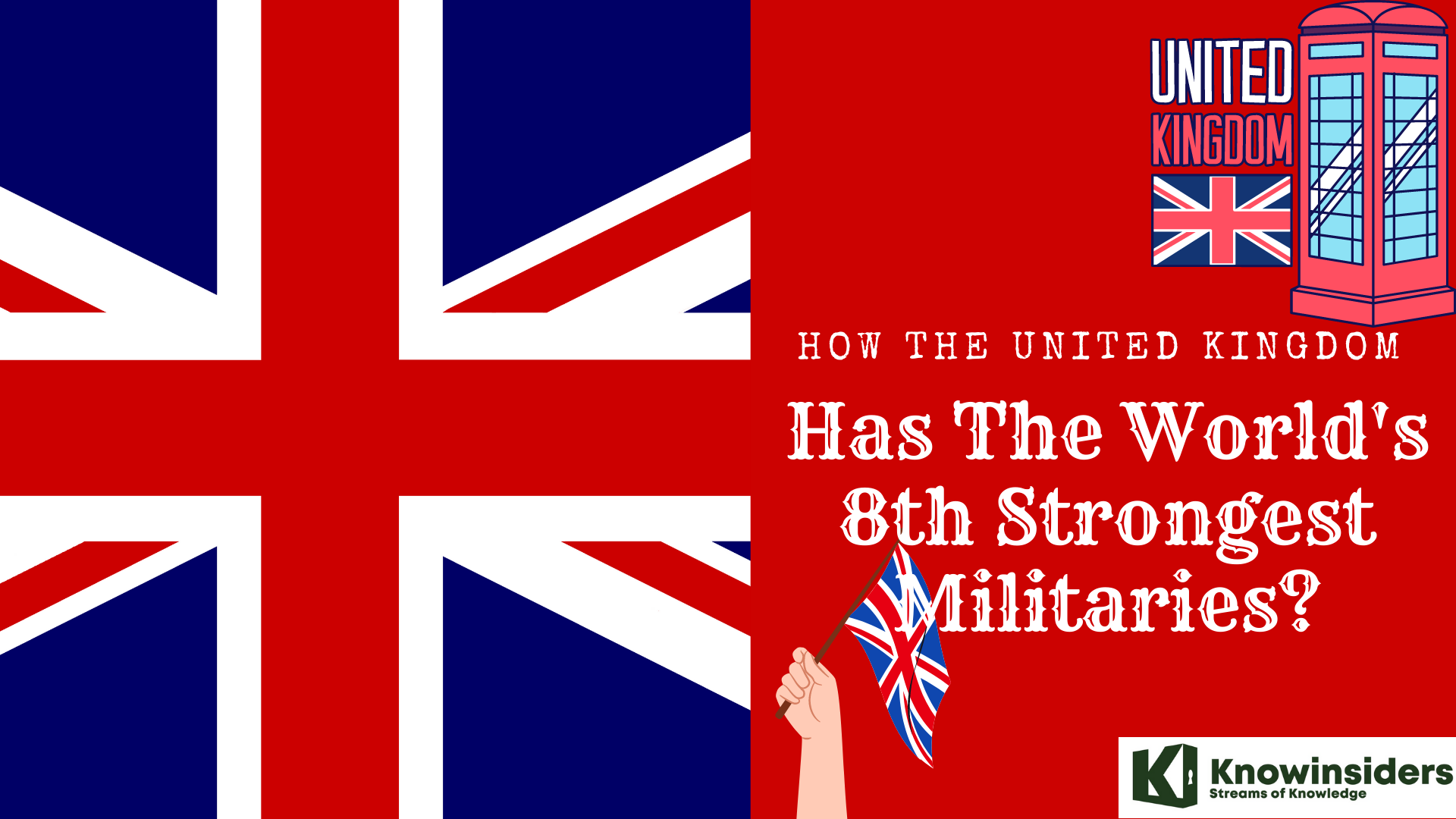 How Strong Is The British Army - 8th Strongest Militaries In The World How Strong Is The British Army - 8th Strongest Militaries In The World United Kingdom is ranked 8 of 140 out of the countries considered for the annual Global Firepower Index (GFP) review. How UK Has The 8th ... |
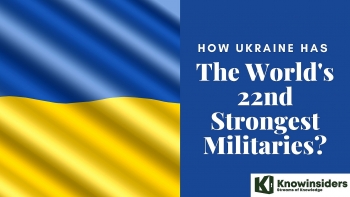 How Strong Is The Ukrainian Army - 22nd Strongest Militaries in The World How Strong Is The Ukrainian Army - 22nd Strongest Militaries in The World The Armed Forces of Ukraine is the military of Ukraine. Here is the military history of Ukraine, and how this country has become the world's ... |

